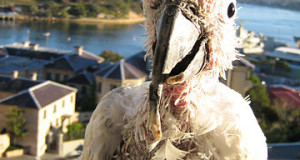It has long been known that male budgerigars imitate the calls of their mates, and that doing so seems to strengthen the bond between the pair. Budgerigars have highly variable contact calls, more so than many other parrots. This may help the pair to maintain contact and to thwart competition within the huge flocks that parakeets typically form. The current research is the first to show that female mate choice is influenced by the initial sound of the male’s contact call, before he has begun to imitate her sounds.
Although budgerigars breed readily for pet keepers, this information may have important implications for hobbyists and zoos working with rare parrots that do not reproduce reliably in captivity.
An interesting article on the natural and captive history of the budgerigar is posted at:
http://www3.sympatico.ca/davehansen/hist.html
 That Bird Blog – Bird Care and History for Pet Birds
That Bird Blog – Bird Care and History for Pet Birds




